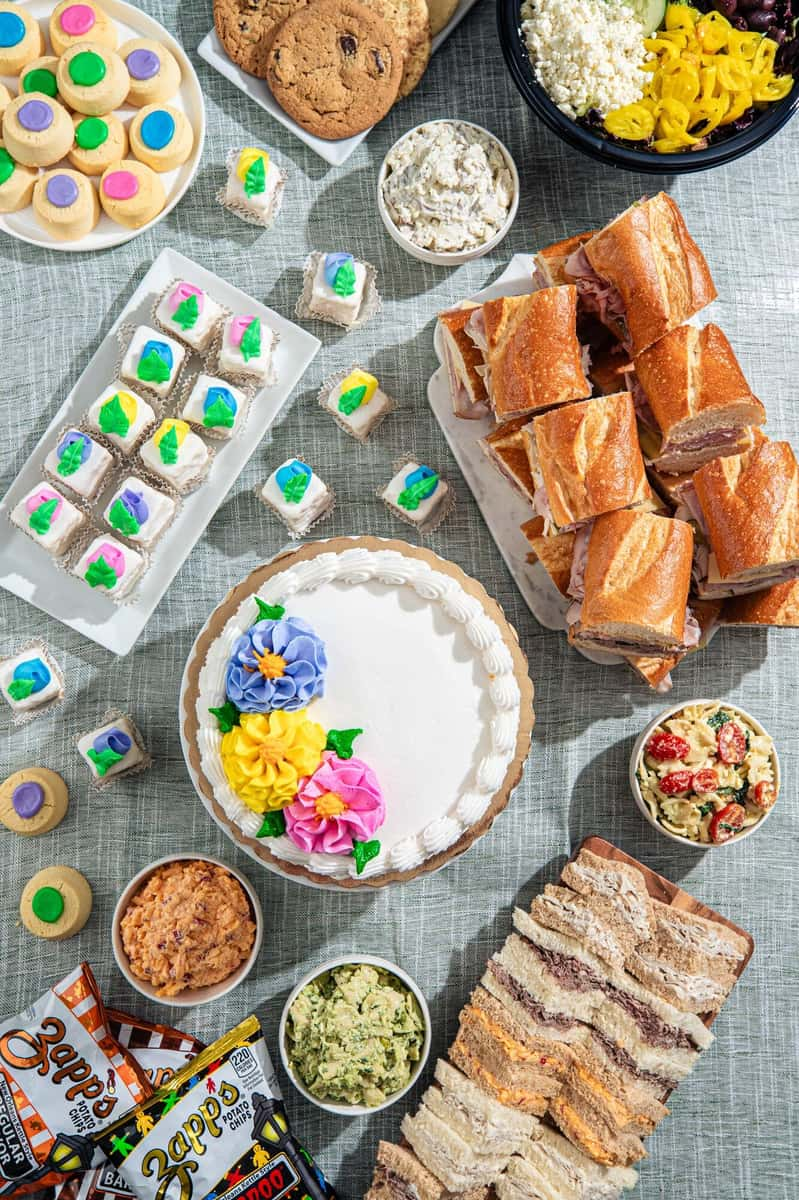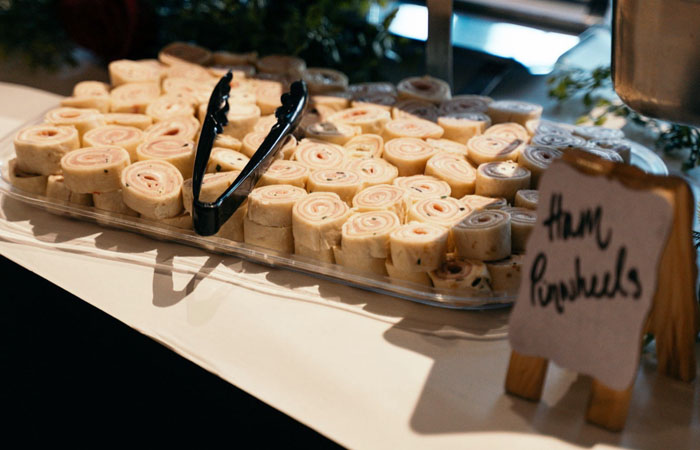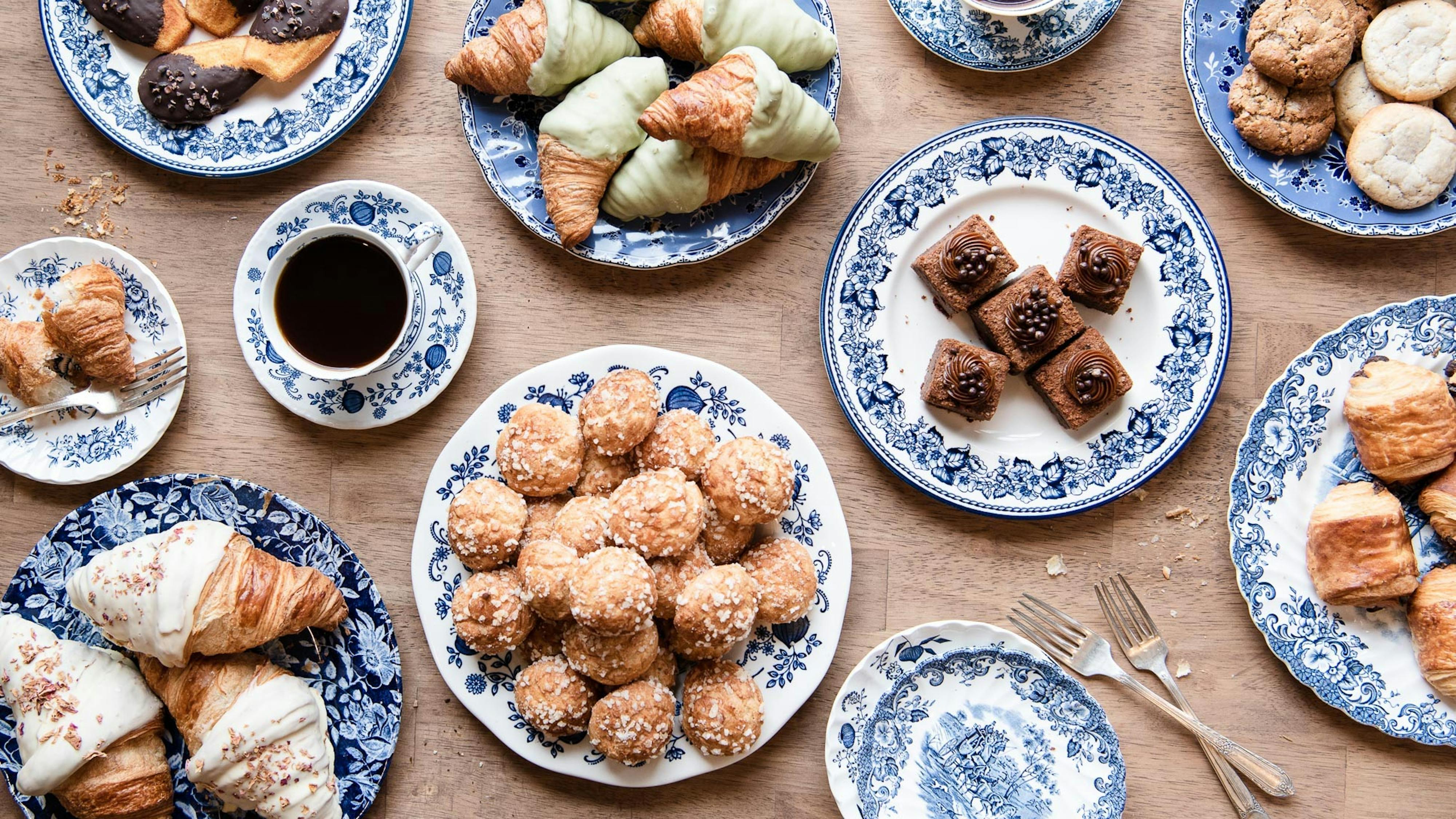Planning a Birthday Party Maddington? Tips for an Excellent Event
Planning a Birthday Party Maddington? Tips for an Excellent Event
Blog Article
Comprehending the Art of Bakery Products: From Freshly Baked Breads to Irresistible Pastries and Finger Foods
From the scientific research behind the ideal loaf of bread, where fermentation and gluten advancement play pivotal roles, to the skill needed for producing layered breads, each facet exposes a compelling narrative of workmanship. The versatility of finger foods highlights exactly how flavor and texture can be skillfully integrated to engage varied preference preferences.
The Scientific Research of Bread Making
At the heart of every loaf of bread lies a remarkable interplay of chemistry and biology. The procedure of bread making starts with the combination of flour, salt, yeast, and water-- each component playing a critical role in the final item.
Yeast, a living organism, ferments the sugars present in the flour, creating co2 and alcohol in the process. The carbon dioxide gas produces bubbles in the dough, creating it to rise and establish a light structure. The temperature level and humidity during fermentation substantially affect yeast task and, consequently, the bread's flavor and structure.

Learning Pastry Strategies
How can one attain the delicate equilibrium of structure and taste that defines exceptional bread? Mastering pastry strategies requires a deep understanding of active ingredients, methods, and the scientific research behind them. Basic to this craft is the choice of high-quality components-- flour, butter, sugar, and eggs-- each playing an essential function in the end product's taste and structure.
The strategy of lamination, which involves folding layers of dough and butter, produces the wanted flakiness in breads like croissants and puff pastry. Accuracy in temperature level is important, as butter must continue to be cold to ensure ideal layers. Correct blending methods, such as the creaming technique for cakes, make sure also unification of air and fat, resulting in a light and ventilated crumb.
Moreover, maintaining the best moisture degrees throughout cooking can significantly affect the outcome, making sure that breads increase properly and attain that golden-brown coating. The art of bread additionally requires persistence and method; each attempt enhances one's skill and understanding of the intricate equilibrium called for to develop tempting pastries that delight the senses. Proficiency in these strategies eventually differentiates a knowledgeable bread chef from an amateur.
Types of Finger Foods
The world of cooking thrills prolongs beyond breads to incorporate a large range of finger foods, which are celebrated for their convenience and convenience. These bite-sized deals with are ideal for social gatherings, offering a selection of tastes and textures that satisfy varied tastes buds.

On the sweeter side, bite-sized cupcakes and tiny tarts supply a fascinating surface to any meal, attracting those with a craving for sweets. Cheese and charcuterie boards serve as an advanced option, enabling guests to customize their bites with an assortment of meats, fruits, nuts, and cheeses.
Flavor Profiles in Baking
Baking is an intricate dancing of taste accounts that integrates sweet, tasty, and umami notes to create a harmonious experience for the taste. Recognizing these accounts is vital for bakers seeking to elevate their creations.
Ingredients such as delicious chocolate and caramel present complex wonderful notes that can either dominate or match various other flavors. Active ingredients like cheeses, seasonings, and herbs can transform an easy dough right into a multifaceted taste experience.
Umami, regularly neglected in cooking, plays a considerable duty in enriching flavors. Active ingredients such as aged cheeses, fermented products, or perhaps particular nuts add to a tasty deepness that boosts overall taste.
In addition, the interplay of acidity from components like buttermilk or citrus enthusiasm can lighten up flavors, providing a revitalizing counterpoint to sweet taste. By thoughtfully combining these flavor accounts, bakers can craft items that reverberate with varied palates, creating a remarkable cooking experience. Ultimately, mastering flavor profiles is crucial to technology worldwide of baking.
Important Baking Equipments and Components
Recognizing taste accounts in cooking collections the phase for picking the right devices and active ingredients that promote the production of exceptional baked goods. The foundation of effective cooking hinge on having crucial devices available. Trick things consist of mixing bowls, determining cups, and spoons for precision, as well as a sturdy stand mixer or hand mixer for effortless mixing. A reliable read the full info here collection of cooking frying pans-- such as sheet pans, loaf pans, and cake frying pans-- is vital for accomplishing preferred forms and textures.
Flour serves as the backbone of the majority of recipes; picking the best kind-- be it pastry, bread, or all-purpose flour-- can considerably impact the result. Cooking powder and baking soda are crucial for creating lift in breads and cakes.
Additionally, integrating taste enhancers like vanilla essence, seasonings, and citrus zest can raise your productions. By ensuring access to these essential devices and ingredients, bakers can confidently start their cooking trip, crafting a diverse range of fascinating baked items.
Conclusion
To conclude, the art of bakeshop items incorporates a profound understanding of both scientific principles and innovative methods. Proficiency in bread production, bread prep work, and finger food presentation reveals the elaborate connections between processes and components. Moreover, discovering varied taste accounts enhances the baking experience, while necessary devices and ingredients offer the foundation for success. Ultimately, the enchanting globe of cooking prospers on the harmonious interplay of science and creativity, causing a myriad of fascinating culinary creations.
Exactly how can one achieve the fragile balance of appearance and taste that defines phenomenal bread? Fundamental to this craft is the option of premium ingredients-- flour, butter, sugar, and eggs-- each playing a crucial duty in the final item's flavor and appearance.

Understanding taste profiles in baking collections the stage for selecting the right devices and look at here ingredients that facilitate the development of phenomenal baked products. Exploring diverse taste accounts enhances the baking experience, while important devices and ingredients give the structure for success.
Report this page